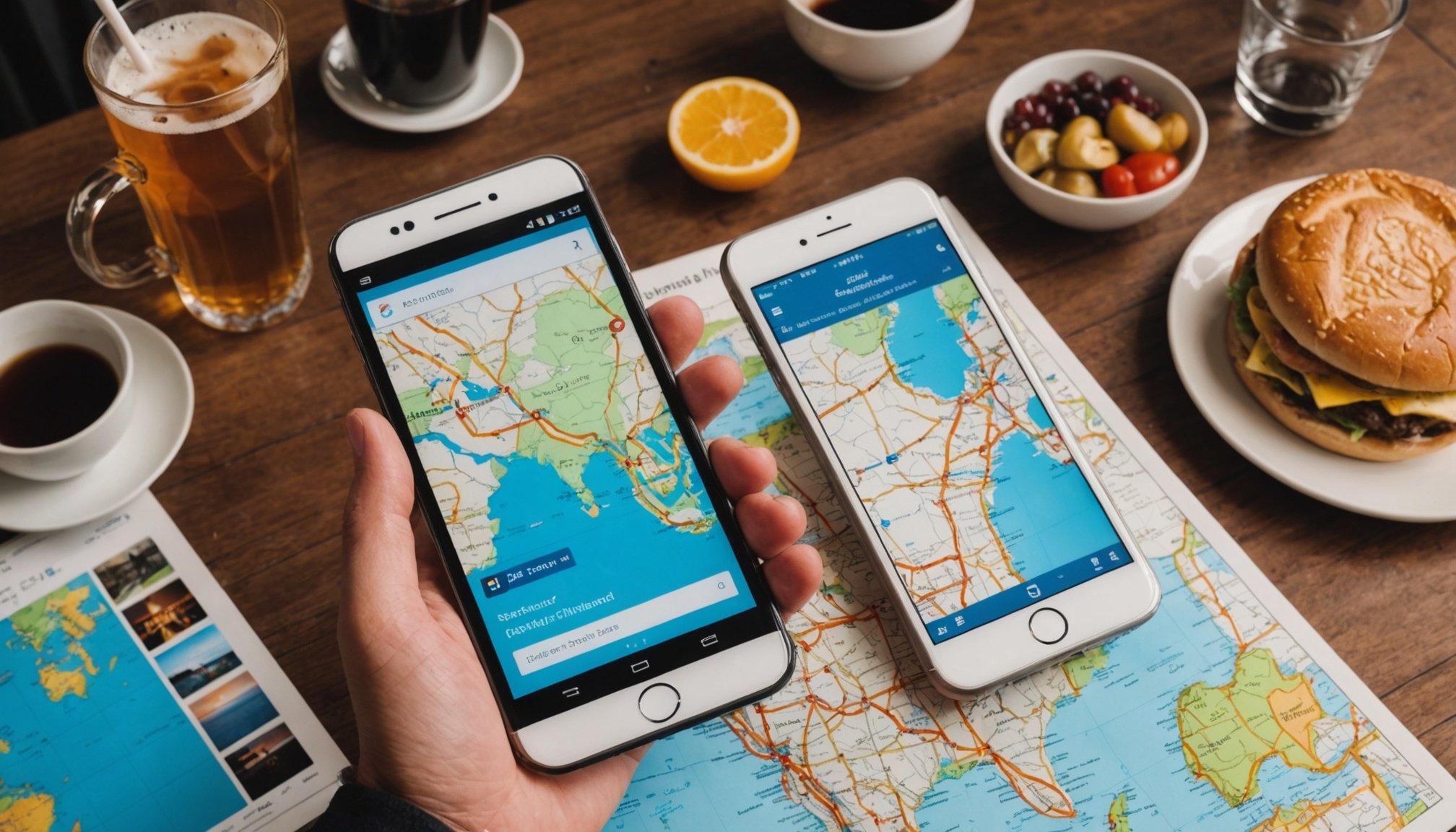Mastering Exciting Travel Itineraries: The Definitive Guide to Smartphone Wizardry
In the era of smartphones, planning and executing a travel itinerary has never been more streamlined and efficient. Whether you’re a seasoned traveler or embarking on your first adventure, the right smartphone apps can make all the difference. Here’s a comprehensive guide to help you navigate the world of travel apps and make your next trip an unforgettable experience.
Planning Your Trip: The Ultimate Toolbox
Before you even pack your bags, the planning phase is crucial. This is where your smartphone becomes an indispensable tool.
Have you seen this : Enhance energy savings: effortlessly manage and monitor your smart home window treatments using your smartphone
TripIt: Your Personal Travel Assistant
TripIt is often hailed as the gold standard for travel planning apps. It centralizes all your travel information, from flight tickets and hotel reservations to car rentals and activity bookings, into a single, easily accessible itinerary[3][4].
- Automatic Itinerary Creation: Simply forward your booking confirmations to TripIt, and the app will create a detailed itinerary for you.
- Offline Access: View your itinerary even without an internet connection, perfect for international travels.
- Real-Time Alerts: Receive notifications about flight changes, delays, and gate information.
- Easy Sharing: Share your itinerary with friends and family with just a few clicks.
“TripIt is a must-have for frequent travelers. It keeps all my travel plans organized and easily accessible,” says Sarah, a year-old frequent traveler.
Additional reading : Smartphone savvy: seamless management of smart home air purifiers for cleaner indoor air
Wanderlog: The Travel Planner Extraordinaire
Wanderlog is another powerful tool for planning your trip. It allows you to create detailed itineraries, manage budgets, and even collaborate with travel companions in real-time[2].
- Itinerary Visualization: See your travel plans on a map, complete with markers for each location.
- Budget Management: Set a personal or group budget and track expenses easily.
- Collaboration: Invite friends to collaborate on the itinerary and assign permissions.
- Offline Access: Access your plans even without an internet connection.
“Wanderlog made our group trip to New York so much easier. We could all see the itinerary and make changes in real-time,” notes Mark, who used Wanderlog for a recent trip.
Navigating the World: GPS and Mapping Apps
Once you’re on the move, navigation apps become your best friends. Here are some of the best options for navigating without an internet connection.
Google Maps: The Default Choice
Google Maps is a staple on most Android devices, but it can also be used offline. Simply download the maps for the region you’re visiting before your trip[1][4].
- Offline Maps: Download maps for entire countries to use without an internet connection.
- Real-Time Traffic: Get real-time traffic updates when connected to the internet.
- Public Transportation: Find routes using public transportation, including buses and trains.
“Google Maps is my go-to for navigating cities. The offline feature is a lifesaver when traveling abroad,” says John, a frequent traveler.
Maps.Me: The Offline Navigation Champion
Maps.Me is highly recommended for its comprehensive offline maps and additional features like points of interest and route planning[1][4].
- Detailed Offline Maps: Download maps for most countries, including street names and points of interest.
- Route Planning: Calculate routes for walking, driving, or using public transportation, all offline.
- Points of Interest: Find hotels, restaurants, and other points of interest even without an internet connection.
“Maps.Me was a game-changer for our road trip across Europe. We never got lost, even in rural areas,” says Emily, who used Maps.Me for a recent road trip.
OsmAnd and MapFactor: Alternative Options
OsmAnd and MapFactor are other highly regarded apps that use OpenStreetMap data to provide detailed offline maps[1].
- OsmAnd: Known for its detailed maps and ability to save maps for any region. It also offers features like hiking trails and contour lines.
- MapFactor: Offers 2D and 3D map views, day and night modes, and support for various vehicles including cars, buses, and bicycles.
“OsmAnd is perfect for hiking trips. The contour lines and trail markers are incredibly useful,” notes David, an avid hiker.
Managing Your Finances and Safety
Traveling involves more than just navigating; it also requires managing your finances and ensuring your safety.
Tricount: The Group Expense Manager
For group trips, managing shared expenses can be a nightmare. Tricount simplifies this process by allowing you to track and split expenses easily[3].
- Expense Tracking: Log all expenses and categorize them for easy tracking.
- Bill Splitting: Split bills among group members and calculate who owes what.
- Real-Time Updates: See updates in real-time, making it easier to manage finances on the go.
“Tricount made our group trip to the city so much easier. We didn’t have to worry about who paid what,” says Rachel, who used Tricount for a recent group trip.
Travel Insurance and Safety Standards
Travel insurance is a must for any trip, and there are apps that can help you find the best policies.
- Allianz Travel Insurance: Offers comprehensive travel insurance plans that cover medical emergencies, trip cancellations, and more.
- Safety Standards: Always check the safety standards of your destination and stay informed about local conditions.
“Travel insurance gave us peace of mind during our trip to York. We knew we were covered in case of any emergencies,” says Michael, who purchased travel insurance for his family trip.
Packing and Preparing: The Final Checklist
Before you leave, make sure you’re well-prepared with the right packing tools and checklists.
Packing Cubes and Lists
Packing cubes can make your luggage more organized, and apps like PackPoint can help you create a detailed packing list.
- Packing Cubes: Use packing cubes to keep your luggage organized and make the most of your space.
- PackPoint: Create a packing list based on the length of your trip, the weather, and your activities.
“Packing cubes were a game-changer for our trip. We could fit so much more in our luggage,” says Laura, who used packing cubes for a recent trip.
Planning a trip can be overwhelming, but with the right smartphone apps, you can make the process much smoother. From planning your itinerary with TripIt and Wanderlog to navigating with Google Maps and Maps.Me, and managing your finances with Tricount, these apps are your ultimate travel companions.
Here’s a quick summary of the apps mentioned:
| App Name | Key Features | Best For |
|---|---|---|
| TripIt | Automatic itinerary creation, offline access, real-time alerts | Frequent travelers |
| Wanderlog | Itinerary visualization, budget management, collaboration | Group trips |
| Google Maps | Offline maps, real-time traffic, public transportation | General navigation |
| Maps.Me | Detailed offline maps, route planning, points of interest | Offline navigation |
| OsmAnd | Detailed maps, hiking trails, contour lines | Hiking and outdoor activities |
| MapFactor | 2D and 3D map views, day and night modes, various vehicle support | Alternative navigation |
| Tricount | Expense tracking, bill splitting, real-time updates | Group trips |
| Allianz Travel Insurance | Comprehensive travel insurance plans | Travel insurance |
| PackPoint | Detailed packing lists based on trip details | Packing and preparation |
So, the next time you plan a trip, make sure to use these apps to make your journey smoother, safer, and more enjoyable. Happy travels!
Additional Tips and Recommendations
- Check Local Regulations: Always check local regulations and safety standards before traveling.
- Use Public Transportation: Use public transportation to save on shipping costs and reduce your carbon footprint.
- Hop Bus Tours: Consider hop bus tours to explore cities efficiently.
- Hiking Trails: Use apps like OsmAnd to find and navigate hiking trails.
- Travel Guides: Use travel guides like GetYourGuide to find and book local activities and tours[3].
By following these tips and using the right apps, you’ll be well on your way to mastering the art of travel planning and execution. Safe travels, and don’t forget to enjoy the journey
Innovative Techniques for Itinerary Optimization
Itinerary optimization is a vital component of crafting seamless travel experiences. Today’s explorers benefit from advanced travel strategies and smartphone tips that enhance journey planning.
Using Calendars and Reminders for Planning
Effective time management starts with using digital calendars and reminders. These tools help travelers organize their days, track important dates, and set timely alerts. Incorporating itinerary details into smartphone calendars ensures all plans are accessible and modifiable on-the-go. By setting up recurring reminders, travelers can keep pace with flight schedules, activities, and reservations.
Syncing Travel Plans with Local Timelines and Events
Aligning travel itineraries with local interactions can significantly enrich travel experiences. Whether it’s joining a local festival or exploring a temporary exhibition, syncing plans with timelines allows travelers to embrace the culture fully. This strategy not only optimizes the schedule but also enhances engagement with the local community.
Leveraging Social Media for Real-Time Updates
Social media serves as an insightful tool for real-time recommendations. Platforms like Instagram or Twitter deliver current updates on must-see attractions and insider tips swiftly. Travelers can also utilize these channels to connect with fellow explorers, exchange experiences, and receive live updates on unexpected events or changes in plans.











